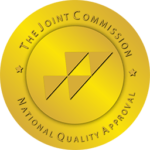In the realm of drug rehabilitation, understanding the multifaceted nature of recovery is crucial. Pink Cloud Syndrome stands out as a particularly euphoric yet deceptive stage among the many phases individuals encounter. Recognizing and addressing this phenomenon can significantly impact the success of one’s journey toward long-term sobriety.
Drug rehabilitation is a complex process that involves numerous stages and emotional phases. Each individual’s journey is unique, influenced by personal history, the severity of addiction, and the support systems in place. Pink Cloud Syndrome is one such phase that, while initially uplifting, can pose significant risks if not properly understood and managed. This article aims to shed light on Pink Cloud Syndrome, offering insights into its nature, the challenges it presents, and strategies for navigating this critical stage in recovery.
What is Pink Clouding?
Pink Clouding refers to a state of overwhelming optimism and euphoria that individuals often experience during the early stages of their recovery from substance abuse. This phase, while initially positive, can sometimes mask the underlying challenges of maintaining sobriety.
The term “Pink Clouding” is derived from the sensation of floating on a cloud, enveloped in positivity and hope. It’s a period where individuals feel intense relief from the burdens of addiction, experiencing a high from their newfound sobriety. However, this high is not necessarily grounded in the reality of the ongoing challenges of recovery. It’s akin to a honeymoon phase in a new relationship, where everything seems perfect and problems seem distant or non-existent.
Psychological and Emotional Impact
During Pink Clouding, individuals may feel an intense sense of relief and joy, having escaped the grips of addiction. This emotional high can boost confidence and motivation, but it can also create a false sense of security that may hinder long-term recovery efforts.
The psychological impact of Pink Clouding can be profound. Individuals often experience heightened emotions, ranging from elation to invincibility. This emotional uplift can be beneficial, providing the motivation to continue the recovery process. However, it can also be misleading, causing individuals to underestimate the challenges that lie ahead. The emotional rollercoaster can lead to unrealistic expectations and, ultimately, disappointment when reality sets in.
Stages of Recovery: Where Pink Clouding Fits In
Early Recovery Phase
The early phase of recovery is characterized by the cessation of substance use and the beginning of a new, sober lifestyle. This period is often accompanied by a surge of positive emotions, marking the onset of Pink Clouding.
During this phase, individuals are often highly motivated. The immediate benefits of sobriety, such as improved health, better relationships, and a clearer mind, are readily apparent. This is when Pink Clouding is most likely to occur. The stark contrast between the chaos of addiction and the clarity of sobriety can create a sense of euphoria and invincibility.
The Onset of Pink Clouding
Pink Clouding typically occurs within the first few weeks to months of sobriety. Individuals feel invincible as if they’ve conquered their addiction for good. While this feeling can be empowering, it’s essential to approach it with caution.
The onset of Pink Clouding can be marked by dramatic shifts in mood and perspective. Individuals may feel an overwhelming sense of pride and accomplishment, believing that the hardest part is over. This phase can be deceptive, as the emotional high may mask the ongoing work required to maintain sobriety. It’s a critical period where support and guidance are essential to keep individuals grounded.
Symptoms of Pink Cloud Syndrome
Common Emotional Symptoms
- Intense happiness and optimism
- Overconfidence in one’s ability to stay sober
- Underestimation of the challenges ahead
Emotional symptoms of Pink Cloud Syndrome can be quite pronounced. Individuals may find themselves constantly in high spirits, feeling as though nothing can go wrong. This heightened emotional state can lead to an inflated sense of self-assurance, where the complexities of addiction recovery are minimized or overlooked.
Behavioral Indicators
- Increased social activity
- Taking on new responsibilities
- Neglecting ongoing recovery practices
Behaviorally, individuals experiencing Pink Clouding may exhibit a sudden burst of energy and enthusiasm. They might take on new responsibilities, engage more actively in social events, and pursue goals with newfound vigor. While these behaviors are positive, they can sometimes lead to neglecting essential recovery practices, such as attending therapy sessions or participating in support groups.
Physical Manifestations
- Boost in energy levels
- Improved physical health
- Enhanced appearance and self-care
The physical manifestations of Pink Cloud Syndrome often reflect the improved well-being associated with early sobriety. Individuals might notice better skin, increased energy, and a generally healthier appearance. These physical improvements can further fuel the emotional high, reinforcing the sense of being on the right path.
Causes of Pink Clouding
Psychological Factors
The newfound clarity and freedom from substance abuse can trigger a psychological high. This shift in perspective often leads to Pink Clouding as individuals embrace their new reality with enthusiasm.
Psychologically, the relief from the constant stress and turmoil of addiction can be overwhelming. The contrast between the chaos of addiction and the calm of sobriety can create a powerful emotional uplift. This psychological shift is a natural response to the newfound sense of control and possibility.
Biological Influences
The brain’s chemistry undergoes significant changes during recovery. The initial phase may see an increase in neurotransmitters like dopamine and serotonin, contributing to feelings of euphoria.
Biologically, the absence of addictive substances allows the brain to begin repairing itself. Neurotransmitters that were suppressed or altered by substance abuse start to normalize. This can lead to a temporary spike in positive feelings as the brain chemistry adjusts to sobriety. Understanding these biological changes is crucial for recognizing and managing Pink Cloud Syndrome.
Environmental Triggers
Supportive environments and positive reinforcement from loved ones can amplify the effects of Pink Clouding. While beneficial, this external validation needs to be balanced with a realistic outlook on recovery.
Environmental factors play a significant role in Pink Clouding. Being surrounded by supportive family and friends who celebrate milestones can enhance the emotional high. Positive feedback and encouragement can reinforce the sense of achievement. However, it’s important to balance this with a grounded approach, recognizing that recovery is an ongoing process.
The Dangers of Pink Cloud Syndrome
Overconfidence and Complacency
One of the primary dangers of Pink Cloud Syndrome is the development of overconfidence. Believing that the hard part is over, individuals may become complacent, neglecting essential recovery practices.
Overconfidence can lead to complacency, where individuals might start skipping therapy sessions or support group meetings. This complacency can erode the foundation of their recovery, making them vulnerable to relapse. Recognizing this danger is crucial for maintaining long-term sobriety.
Risk of Relapse
The euphoric state can mask the underlying issues that need addressing. Without ongoing support and vigilance, individuals are at a higher risk of relapse when the euphoria fades.
The risk of relapse is heightened during the Pink Cloud phase because the emotional high can obscure the ongoing challenges of recovery. When the euphoria subsides, individuals might find themselves unprepared for the emotional lows and stressors that follow. Continuous support and coping strategies are essential to navigate this transition and prevent relapse.
Emotional Volatility
The transition from Pink Clouding to the more challenging phases of recovery can lead to emotional instability. The drop from euphoria to the reality of maintaining sobriety can be jarring and disheartening.
Emotional volatility is a common risk as individuals move past the Pink Cloud phase. The sudden shift from feeling invincible to facing the daily struggles of sobriety can be emotionally taxing. This volatility can lead to feelings of frustration, disappointment, and even depression if not properly managed. Support systems and professional guidance are vital during this period.
Managing Expectations During Recovery
Setting Realistic Goals
It’s crucial to set achievable and realistic goals during recovery. This approach helps manage expectations and reduces the risk of disappointment when the initial euphoria subsides.
Setting realistic goals involves understanding that recovery is a gradual process. Goals should be specific, measurable, achievable, relevant, and time-bound (SMART). Breaking down the recovery journey into manageable steps can help individuals stay focused and motivated without becoming overwhelmed.
The Importance of Patience
Recovery is a marathon, not a sprint. Patience is essential in navigating the ups and downs of the journey. Understanding that setbacks are part of the process can foster resilience.
Patience is a virtue in the recovery process. Recognizing that setbacks and challenges are natural parts of the journey can help individuals stay committed. It’s important to celebrate small victories and remain patient with oneself, understanding that progress might be slow but is still significant.
Building a Support System
A robust support system is invaluable. Surrounding oneself with understanding and supportive individuals can provide the necessary encouragement and accountability during challenging times.
Building a support system involves engaging with family, friends, and recovery communities. Support groups, therapy, and peer networks offer essential emotional and practical support. A strong support system can provide encouragement, share experiences, and offer guidance, making the recovery journey more manageable.
Strategies to Navigate Pink Clouding
Mindfulness and Meditation
Practicing mindfulness and meditation can help individuals stay grounded. These techniques foster self-awareness and emotional regulation, essential for managing the highs and lows of recovery.
Mindfulness and meditation are powerful tools for maintaining emotional balance. These practices encourage individuals to stay present and observe their thoughts and feelings without judgment. This self-awareness can help manage the emotional highs and lows associated with Pink Cloud Syndrome, fostering a more balanced and grounded approach to recovery.
Therapy and Counseling
Ongoing therapy and counseling provide a safe space to explore emotions and address underlying issues. Professional guidance can help individuals navigate Pink Cloud Syndrome effectively.
Therapy and counseling are critical components of a comprehensive recovery plan. Professional therapists can help individuals understand and manage their emotions, develop coping strategies, and address any underlying psychological issues. Regular therapy sessions offer a structured environment to process experiences and gain insights into one’s recovery journey.
Preventing Relapse During Pink Clouding
Recognizing Warning Signs
Being aware of the warning signs of Pink Cloud Syndrome is crucial. Identifying overconfidence and emotional volatility early can help prevent relapse.
Recognizing the warning signs of Pink Cloud Syndrome involves staying attuned to emotional and behavioral shifts. Overconfidence, neglecting recovery practices, and emotional volatility are red flags that require attention. By identifying these signs early, individuals can take proactive steps to address them and prevent potential relapse.
Developing Coping Mechanisms
Effective coping mechanisms, such as mindfulness and peer support, are essential in navigating the challenges of Pink Cloud Syndrome and maintaining long-term sobriety.
Developing coping mechanisms is vital for managing the emotional highs and lows of Pink Cloud Syndrome. Techniques such as mindfulness, meditation, and regular therapy sessions can help individuals stay grounded. Peer support groups offer a platform for sharing experiences and gaining insights from others who have faced similar challenges. These coping mechanisms provide the tools needed to navigate the recovery journey effectively.
Staying Committed to Recovery
Commitment to recovery practices, including therapy and support groups, is vital. Continuous engagement with these resources can sustain progress and prevent setbacks.
Staying committed to recovery involves maintaining regular participation in therapy, support groups, and other recovery activities. This commitment helps individuals stay focused and motivated, even when faced with challenges. Continuous engagement with recovery resources ensures ongoing support and guidance, making it easier to sustain progress and prevent relapse.
Overcome Addiction at True Self Recovery
Understanding Pink Cloud Syndrome is crucial for anyone in the early stages of recovery. While the initial euphoria can be uplifting, it’s essential to navigate this phase with caution and realistic expectations. With the right support and strategies, individuals can transition from the Pink Cloud to sustainable, long-term sobriety.
If you or a loved one are struggling with addiction or a substance use disorder, get in touch with True Self Recovery. Our drug and alcohol addiction treatment center is dedicated to providing individuals with the tools to overcome substance abuse and achieve a lasting recovery.
FAQs
What is Pink Cloud Syndrome?
Pink Cloud Syndrome is a phase of overwhelming optimism and euphoria experienced during the early stages of recovery from substance abuse.
How long does Pink Cloud Syndrome last?
The duration varies, but it typically lasts from a few weeks to several months, depending on the individual’s journey and support system.
Can Pink Cloud Syndrome lead to relapse?
Yes, the overconfidence and emotional volatility associated with Pink Cloud Syndrome can increase the risk of relapse if not managed properly.
How can loved ones support someone experiencing Pink Cloud Syndrome?
Loved ones can provide support by encouraging realistic goals, offering continuous emotional support, and helping build a strong recovery plan.
What resources are available for managing Pink Cloud Syndrome?
Resources include therapy, counseling, peer support groups, and educational materials provided by rehabilitation facilities.



